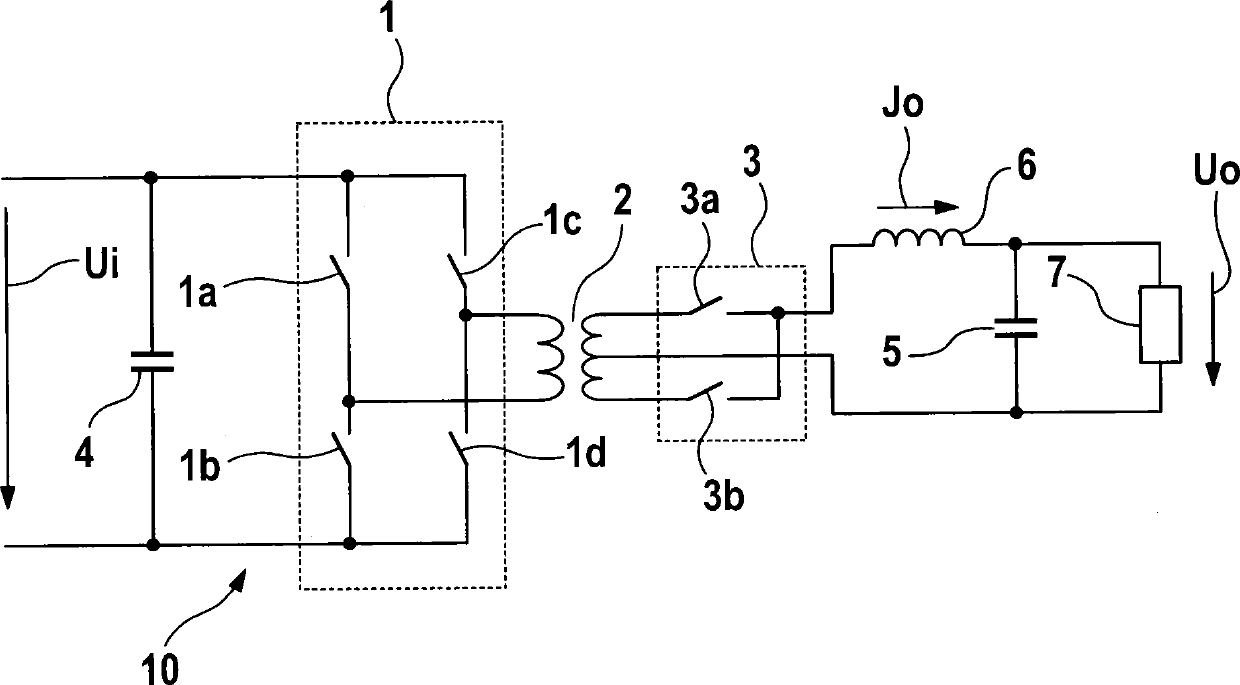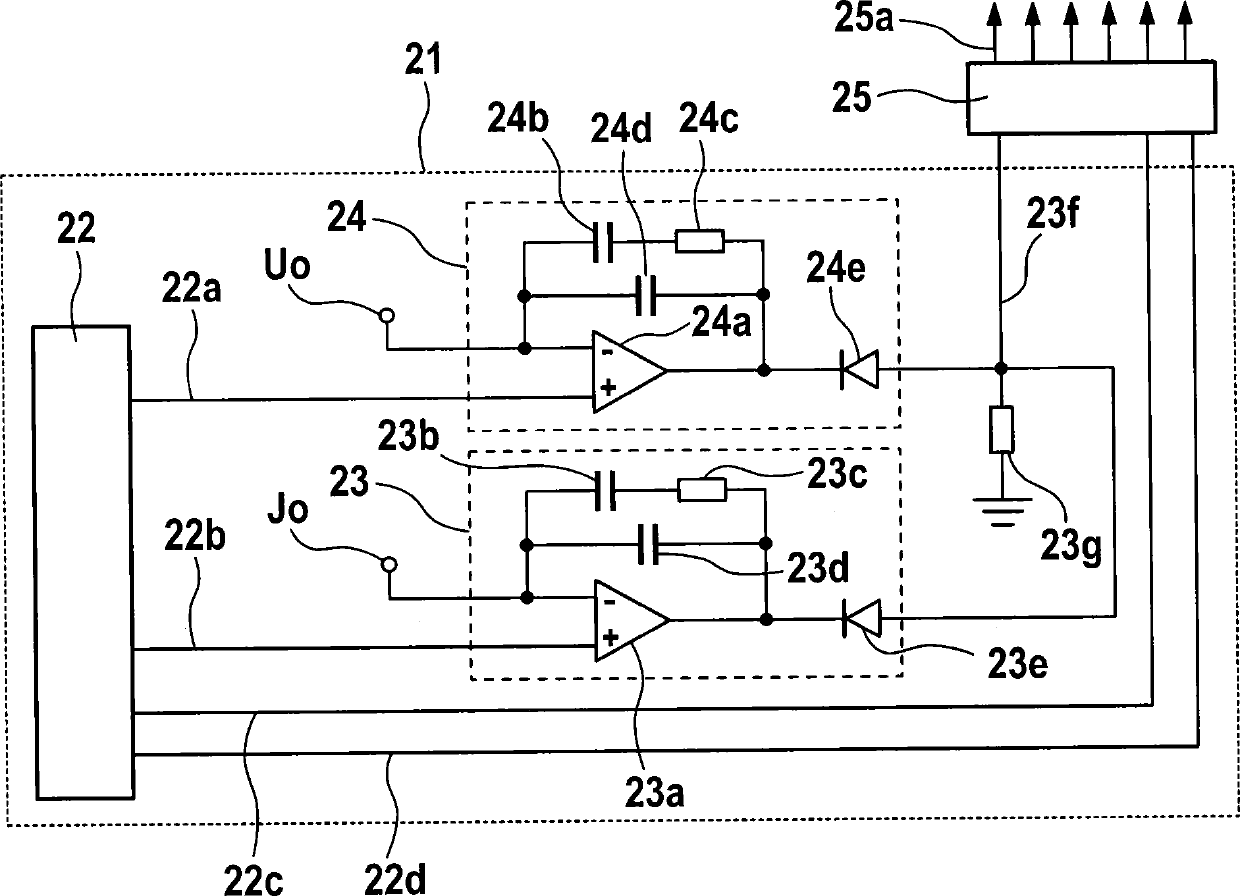Control apparatus and method for controlling a DC voltage converter
A control device, a technology for DC voltage, applied in output power conversion devices, high-efficiency power electronic conversion, conversion of DC power input to DC power output, etc., can solve problems such as danger, transformer saturation, and reduction of excitation inductance
- Summary
- Abstract
- Description
- Claims
- Application Information
AI Technical Summary
Problems solved by technology
Method used
Image
Examples
Embodiment Construction
[0020] figure 1 A schematic diagram of a DC voltage converter 10 is shown. The DC voltage converter 10 comprises a transformer 2 having a primary side winding and a secondary side winding which is divided into two sections by means of an intermediate tap. The transformer 2 can be designed, for example, for converting a high voltage into a low voltage and can have, for example, a winding ratio between the primary-side and secondary-side windings of higher than 1, in particular, for example, 10:1. In particular, the winding ratio of the two secondary-side winding sections can be 1, ie the two secondary-side winding sections have the same number of windings.
[0021] The primary-side winding of the transformer can be fed by the two output terminals of the four-quadrant regulator 1 . In this case, the four-quadrant regulator 1 can have, for example, four switching devices 1 a , 1 b , 1 c , 1 d in the form of a full bridge circuit. The switching devices 1 a , 1 b , 1 c , 1 d can...
PUM
 Login to View More
Login to View More Abstract
Description
Claims
Application Information
 Login to View More
Login to View More - R&D Engineer
- R&D Manager
- IP Professional
- Industry Leading Data Capabilities
- Powerful AI technology
- Patent DNA Extraction
Browse by: Latest US Patents, China's latest patents, Technical Efficacy Thesaurus, Application Domain, Technology Topic, Popular Technical Reports.
© 2024 PatSnap. All rights reserved.Legal|Privacy policy|Modern Slavery Act Transparency Statement|Sitemap|About US| Contact US: help@patsnap.com










